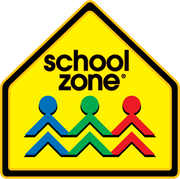Kids on the spectrum or with other neurodivergent diagnoses have unique needs. Yet, depending on severity, they also share some milestones, requirements, and challenges with neurotypical kids. So it makes sense that particular learning tools are excellent for both.
Differences take a variety of forms
In addition to autism, neurodivergence can include ADD/ADHD, learning disabilities such as dyslexia and dysgraphia, Tourette syndrome, sensory processing disorders and other conditions.
But the rise in autism diagnoses has been dramatic. In March 2023, the Centers for Disease Control and Prevention reported that "One in 36 (2.8%) 8-year-old children have been identified with autism spectrum disorder (ASD)…" That's up from 1 in 150 in 2000 and 1 in 54 by age 8 in 2016, based on figures from an NBC health report two months before the CDC data.
John Elder Robison and Dena Gassner, reporting for the medical publication STAT News, say that "The main reason we are finding more autism is simple: Clinicians are getting better at spotting what was always there."
Regardless of cause, the numbers are changing the learning landscape. In "Signs and Symptoms of Autism Spectrum Disorder," the CDC describes some common characteristics of autism as challenges with social communication and interaction skills including not showing facial expressions like happy, sad, and angry; exhibiting restrictive or repetitive behaviors or interests; along with delays in language, movement, and cognitive skills and unusual sleeping and eating habits among others.
Flash cards for math and reading—and for visual learners

How kids—including neurotypical kids—learn varies, and that's true for neurodivergent kids, too. There is no one-size-fits-all. However, flash cards (or flashcards) are a time-tested learning tool for all kids. Though some question how much they improve comprehension of concepts, consider how we typically learn multiplication tables and even the basics of a foreign language. It generally involves drills and memorization, which build speed, confidence, and a sturdy foundation.
They also appeal to the learning style of kids on the spectrum. Last October, Yolande Loftus, BA, LLB, in an article for Autism Parenting Magazine, titled, "Autism Flashcards: Aiding Learning and Communication," noted that "It may be a generalization, but autism is often linked to a visual learning style." She continues, "It follows that using flashcards (especially picture cards as visual supports) for learning may be a great tool for parents to help their child on the spectrum."
For example, Picture Words Flash Cards from School Zone help associate each word with its object or animal picture.

Often kids on the spectrum also develop a keen interest in or fascination for a particular subject or topic early on. The Australian Raising Children website says that "Many autistic children and teenagers have routines, rituals, obsessions, and special interests" that help them feel less stress and be better able to cope with their surroundings.
Loftus, in her article, notes that today's digital flash cards can be more exciting and also suggests that "For teachers, the best way to utilize flashcards for students with autism may be to incorporate the kids' special interests," and she uses trains as one example.
Interest-specific flash card sets on School Zone's Anywhere Teacher online learning program for kids 2-8 include President Flash Cards, Insect Flash Cards, Space Flash Cards, Geography Flash Cards: Landforms, Geography Flash Cards: Bodies of Water. and The United States of America Flash Cards that ask kids to guess the state based on its shape, and then learn its capital and nickname. (Two one- or two-player games on Anywhere Teacher that feature similar information are USA Wiz Quiz and State the Facts.)

Flash cards and other activities for social-emotional learning
Helping kids understand their thoughts and feelings and how to channel them into healthy appropriate, productive behaviors is part of the learning curve for all kids. The Committee for Children website notes that "Social-emotional learning (SEL) helps improve kids' academic performance, curtail bullying, reduce dropout rates, and build character." The article also says it promotes a positive classroom environment.
The organization Autism Speaks, in a Q&A, describes emotional regulation as "the ability to cope with situations that cause emotions like stress, anxiety, or frustration."
But neurodivergent kids generally struggle more significantly with SEL including emotional regulation, feeling and expressing their own emotions, and perceiving other people's. The Autistica website says that "1 in 5 autistic people have alexithymia," which is difficulty with feeling emotions.
In a blog post for Life Skills Advocate titled, "Emotional Regulation and ADHD: What You Need to Know," Rebecca Pierce says that "For people with neurodiversity, emotional regulation can be a challenge. This is because neurodiversity can cause problems with impulsivity, which can lead to acting out or making decisions without thinking things through." The post further notes that "neurodiversity can also cause problems with focus and concentration, which can make it difficult to stay on task and manage emotions." And struggling with emotional regulation can lead to depression and anxiety.
School Zone's Anywhere Teacher program has a range of games and activities dealing with social-emotional learning. Introducing Basic Emotions asks little ones to look at flash card pictures and name 12 different emotions. Describing My Emotions asks kids to think of a time they felt a particular emotion. Cartoon kids also relate experiences, and the activity then asks learners to identify the feeling that likely went along with each experience.

One of the newest SEL activities on Anywhere Teacher are Emotions Flash Cards that show a feeling, explain what it is and what produces it, and offer healthy ways of expressing or responding to the feeling. And in I Can Help Others, kids look at the picture, identify what emotion they think this person is feeling and why, and select the picture that shows what they would do to help.
There are also more flash cards, worksheets, and other activities on Anywhere Teacher focused on social-emotional learning.
Finding what works best for each child to master important life and academic skills is the #1 goal, onscreen, on paper, and in practice.












